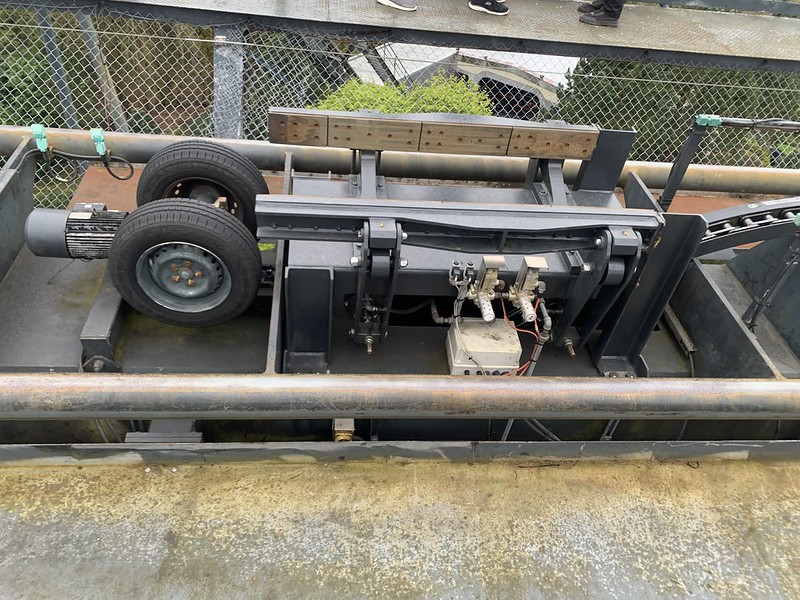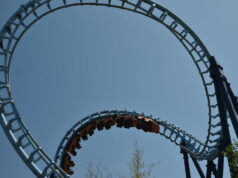Roller coasters are designed to thrill, terrify, and leave riders breathless—but behind every drop, inversion, and high-speed launch is an incredible network of highly engineered safety systems. Modern coasters are some of the safest forms of entertainment on the planet thanks to decades of innovation, rigorous testing, and redundancy built into every component.

Here are eight essential safety systems that keep roller coasters running smoothly and reliably every single day.
1. Block Systems (Block Brakes)
Block systems are the backbone of roller coaster safety. Tracks are divided into segments called blocks, and only one train is allowed in each block at a time. Sensors detect when a train enters and leaves a block, preventing collisions.
If a train ever fails to clear a block, the system automatically stops other trains further back, ensuring safe spacing at all times. Block systems can be magnetic, friction-based, or a mixture of both.
2. Redundant Restraint Mechanisms
Lap bars, over-the-shoulder restraints, and harnesses are equipped with multiple locking systems. Even if one mechanism fails (extremely unlikely), the secondary or tertiary lock keeps the restraint secure.
Many modern restraints use:
- Hydraulic cylinders for smooth motion and strong locking
- Ratchet systems that physically lock into teeth
- Sensor-based verification to ensure every restraint is locked before dispatch
Ride operators must also confirm visual and physical checks, adding an extra layer of safety.
3. Anti-Rollback Devices
On lift hills, you’ll hear a loud clicking sound—that’s the anti-rollback system. These metal “dogs” prevent a train from sliding backwards if the chain lift stops unexpectedly.
They engage instantly and automatically, making rollback accidents virtually impossible on traditional lift-coaster climbs.
4. Programmable Logic Controllers (PLCs)
Modern roller coasters are run by highly advanced computers known as PLCs. These systems:
- Monitor every sensor
- Track the exact position of each train
- Trigger brakes, launches, and show elements
- Automatically shut down the ride if anything reads incorrectly
PLCs react in milliseconds, far faster than a human ever could. They also record data logs that engineers review daily.

5. Magnetic Braking Systems
Magnet-based brakes are the gold standard for stopping roller coaster trains safely and consistently. Unlike friction brakes:
- They don’t wear out because magnets never touch the train
- They work even during power cuts
- They provide smooth, calculated deceleration
Many coasters use eddy current brakes—powerful magnets that interact with metal fins on the train to generate controlled resistance.
6. Daily Inspection Routines
Before a single rider boards, roller coasters undergo extensive daily checks, often starting before sunrise. Inspections include:
- Testing block brakes and sensors
- Cycling trains empty
- Checking wheels, bolts, and restraint mechanisms
- Walking the track to inspect structural components
Engineers and ride operators follow strict safety protocols, and regulatory bodies frequently audit theme park maintenance practices to ensure compliance.
7. Wheel Assemblies and Guide Systems
Roller coaster trains use three sets of wheels on each point of contact:
- Running wheels (support the train)
- Side friction wheels (prevent lateral movement)
- Upstop wheels (keep the train locked to the rails)
This three-wheel design guarantees the train cannot leave the track—even during intense inversions or negative-G airtime hills.
Wheels are inspected daily and replaced regularly to maintain performance.
8. Multiple Power and Emergency Backup Systems
Roller coasters rely on multiple electrical systems, but they’re also designed to stay safe during power failures. Key features include:
- Backup generators
- Battery-powered fail-safes
- Gravity-based braking systems (like magnetic brakes)
In the event of a complete power loss, coasters automatically enter a safe shutdown state. Evacuation routes and platforms are built into the track for rare situations where guests must be guided off safely.
Roller coasters feel wild and unpredictable—but in reality, they’re controlled by some of the most sophisticated safety technology in engineering. From block systems to magnetic brakes and advanced computers, these rides are built with layers upon layers of protection.
The next time you’re hurtling through a corkscrew or cresting a massive drop, remember: every twist and turn is supported by decades of innovation and rock-solid safety systems working tirelessly behind the scenes.









